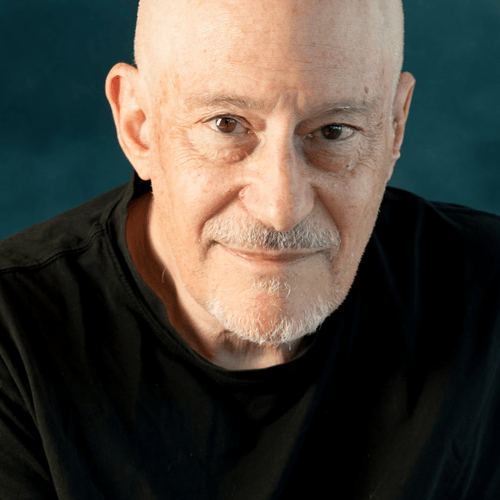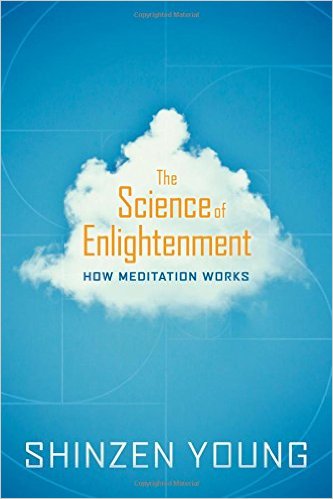
Chris interviews scientist and mindfulness teacher, Shinzen Young, about the power of mindfulness practice and bringing it into the modern world.
Shinzen Young is an American mindfulness teacher and neuroscience research consultant. His systematic approach to categorizing, adapting and teaching meditation has resulted in collaborations with Harvard Medical School, Carnegie-Mellon University and the University of Vermont in the burgeoning field of contemplative neuroscience.
Shinzen Young is known for his interactive, algorithmic approach to mindfulness, and often uses mathematical metaphors to illustrate meditative phenomena. He is the author of The Science of Enlightenment, Natural Pain Relief and numerous audio offerings. Shinzen leads residential retreats throughout North America. In 2006, he created the Home Practice Program. These phone-based mini-retreats are designed to make deep meditation practice accessible to anyone in the world regardless of their location, health situation, and time or financial constraints.
Show Notes
The Science of Enlightenment – So I figured why not start with the most obvious question possible, which is, what is the science of enlightenment?
Colonies of Personalities – So I want to explore something you wrote in the Author’s preface you write, “A central notion of Buddhism is that there’s not a thing inside us called a self. One way to express that is to say that we are a colony of sub-personalities and each of those sub-personalities is in fact not a noun but a verb—a doing.” So let’s talk more about the teachings or notion of no-self as well as the colony of sub-personalities that we each have.
Mist Out of Mysticism — Okay, and so you follow that up by writing, “One of my doings is Shinzen the researcher. Shinzen the researcher is on a mission to “take the mist out of mysticism.” Something I personally thank you for. So can you talk a bit about mysticism and what taking the mist out of it consists of?
Science and the Priest – And so interestingly enough, you were turned on to science by a Jesuit Priest. Would you share that story?
Mindfulness – And you go on to write about discovering mindfulness while living at the International Buddhist Meditation Center in Los Angeles. I really appreciated the way you broke down mindfulness, describing it as a threefold attention skill set that consists of concentration power, sensory clarity, and equanimity working together. And later on you write about the basic model for the mindfulness-based spiritual path offering a theorem of: Concentration + Sensory clarity + Equanimity + Time = Insight + Purification. Would you talk more about this model/theorem you’ve created?
Practice – So let’s say someone who’s listening to this conversation is totally new to the ideas of mindfulness and meditation. Is there a particular practice or meditation you would recommend that could help get them on their way?
The Most Fundamental Skill – You have a chapter titled “The Most Fundamental Skill” in which you talk about people’s experiences of spontaneous states of extraordinary focus, weather it’s the result of a form of stress, or an accident, perhaps it happens while playing sports and so on, but you go on to say that such states of presence and focus are trainable and that we don’t have to wait for unusual or extreme conditions to experience them.
Three Types of Spiritual Experience – You say that there are three types of spiritual experiences that consist of 1) spirituality of thought 2) spirituality of feeling and 3) mysticism, which we’ve already talked a little about.
Thinking/Feeling – Later on you write about the thinking mind, the feeling body and how thoughts and feelings intertwine.
The Many Faces of Impermanence – You have a chapter called The Many Faces of Impermanence in which you write, “You might be wondering how impermanence could be enriching for a person. At first sight, impermanence seems at best trivial and at worst pessimistic. Trivial: everyone knows that things come and go, so what’s the big deal? Pessimistic: if everything eventually pass, why bother doing anything at all?” and you go on to describe impermanence as something both profound and empowering.
The Real power of Being – You describe the path to enlightenment as a journey from the surface of consciousness to the Source of consciousness and how consciousness has layers. You provide a three-level model of this consciousness and the spiritual journey with “everyday consciousness” at the top, “The Subconscious” in the middle and “The Source” at the bottom. So can you talk about journeying through these layers of consciousness and what that looks like/entails?
My Happiest Thought – The final chapter of the book is titled, “My Happiest Thought,” a phrase you got from Albert Einstein. In that chapter you list some concepts and goals that you wish to make feasible as your happiest thought. I thought that’d be a nice way to end our conversation today.
Keep up with Shinzen Young online and on Twitter.
Amazon Recommendations
Photo via


